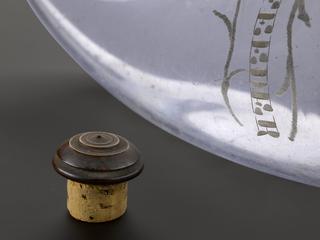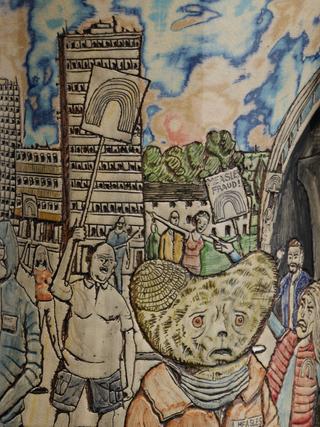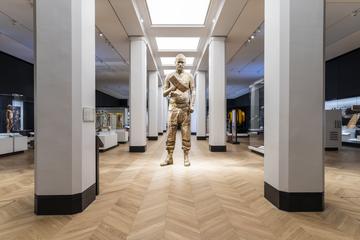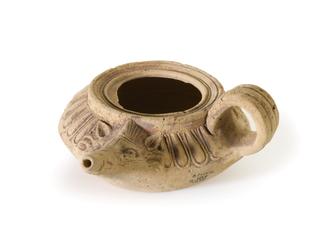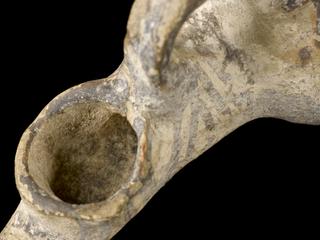


















'Investment: Tabitha’s Gown', hand embroidered thread and mirrors on linen; cotton binding and fastening, by Tabitha Moses, Liverpool, England, 2014
Tabitha Moses is a Liverpool-based artist who has been described as a ‘collector, a rag and bone archivist of the peripheral’. Although primarily textile based, her works take many forms, inspired by personal stories and histories. In 2013 she became the first artist to win both the Liverpool Art Prize and the People’s Choice Award in the same year.
‘Investment: Tabitha’s Gown’ is part of a series of three hand embroidered hospital gowns and photographic portraits of women undergoing IVF treatment, inspired by the artist’s personal experience of this journey. Each has a mandala-style composition, influenced by the embroidery of Pakistan, and depicts objects of individual significance to the women they represent.
Moses was referred to The Hewitt Fertility Centre at the Women’s Hospital in Liverpool after she and her husband, fellow artist Jim Loftus, spent three years trying to conceive naturally without success. Following a miscarriage and two unsuccessful cycles of IVF using her own eggs, they had a daughter using the eggs of an anonymous donor.
In addition to using all the help medical science could offer, Moses found herself gravitating towards alternative therapies and folklore rituals: she had acupuncture, massages and hypnotherapy, and each evening lit a candle in front of a makeshift shrine comprised of a Ghanaian fertility figurine and a baby Jesus figure from a Christmas nativity set. Representing these elements in stitch, ‘Tabitha’s gown’ also shows the clinical paraphernalia of fertility treatment, including a syringe, vials of hormones, pregnancy tests and a thermometer. Four embryos from her unsuccessful cycles are depicted either side of an embroidered bloodstain representing her miscarriage. The central motif is the mature egg awaiting fertilisation.
Pioneered in the UK in 1978, in-vitro fertilisation or IVF has given hope to millions of people otherwise unable to conceive. Yet decades later, the process remains physically, emotionally, and financially demanding, and is more likely to fail than succeed.
Tabitha’s gown reflects the fact that many of us embrace complementary and alternative medicine, as well as turning to spiritual and emotional sources of support, when facing uncertain medical outcomes. For Moses, making art also provided a means of feeling in control over some part of the process.
Details
- Category:
- Art
- Object Number:
- 2016-568
- Materials:
- cotton (fibre), cotton (textile) and glass
- Measurements:
-
overall (laying flat; width measured under arms): 650 mm x 1025 mm,
depth: 1050mm
height: 15mm
width: 550mm
- type:
- gown
- copyright:
- Moses, Tabitha
- credit:
- Tabitha Moses
